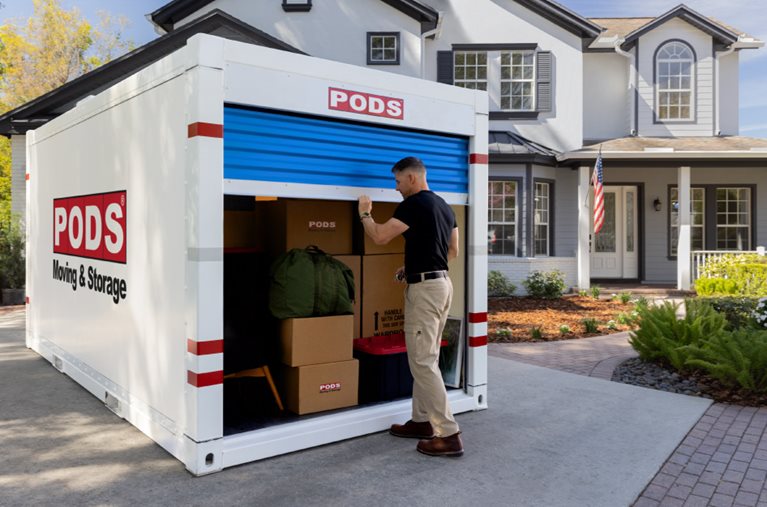
The Only PCS Moving Checklist You Need: How To Maximize Your Move (and Your Savings)
Military Moving
Have a pending PCS move (aka a permanent change of station move)? Need a PCS moving checklist? Then you’ve come to the right place. Whether you have a few months or a few weeks to prepare, we’ll help you coordinate your PCS move like a moving checklist pro.
| PODS is proud to serve the men and women who serve our country. Active, retired, and veteran members of the military receive a PODS military discount.* For PPM/DITY moves or storage during deployments, call 866-556-9574. *Offer available for new orders only. Must mention promotional code at time of order. Cannot be combined with any other offer. Offer void where prohibited by law. Available for a limited time, only at participating locations. Excludes special and exclusive promotions. |
PCS Pending Move — FAQs
Q: What will military movers not pack?
A: The same rules apply for military and residential moves — professional movers won’t transport anything hazardous, perishable, or super valuable (think firearms, cleaning supplies, propane tanks, open food, or priceless antiques). They also skip personal docs (passports, bills), cash, medical supplies, and pets. Some won’t take alcohol over a certain amount or plants due to state laws.
Q: How to pack for PCS move?
A: The best advice for PCS move packing is to stay organized! The U.S. Department of Defense has plenty of information available, along with an additional PCS moving checklist to help keep things simple. You should also work with your installation’s relocation assistance program for help tailored to your specific situation.
Q: How much money do you get for a PCS move?
A: For a PCS move, the military helps cover your costs in a few ways. You’ll get a Dislocation Allowance (DLA) to help with relocation expenses. If you drive, you’ll earn some back per mile, and you’ll get per diem for meals and lodging during travel. If you need a place to stay during your move, Temporary Lodging Expense (TLE) covers up to 10 days. If you do a PPM/DITY move, you can pocket up to 100 percent of what the government would’ve paid a professional mover. To get a better idea of entitlements, use a PCS move calculator.
Q: Can I ship HHG after PCS?
A: Yes, you can ship your HHG after your PCS move, but it’s best to do it as close to your orders as possible. The government covers the cost, and you’re given a weight limit based on your rank and family status. You can also ship unaccompanied baggage separately, which is handy for essentials when you first arrive before settling into a new home. Just make sure everything is tied to your PCS orders to avoid paying out of pocket.
Q: What should you take with you when you PCS?
A: It’s important to remember that your PCS move is essentially the same as a regular move — you’ll be packing up your entire household. However, there are things to keep close at hand, such as your uniforms, daily essentials, and a moving binder with all your vital PCS move paperwork inside (including this PCS moving checklist, of course).
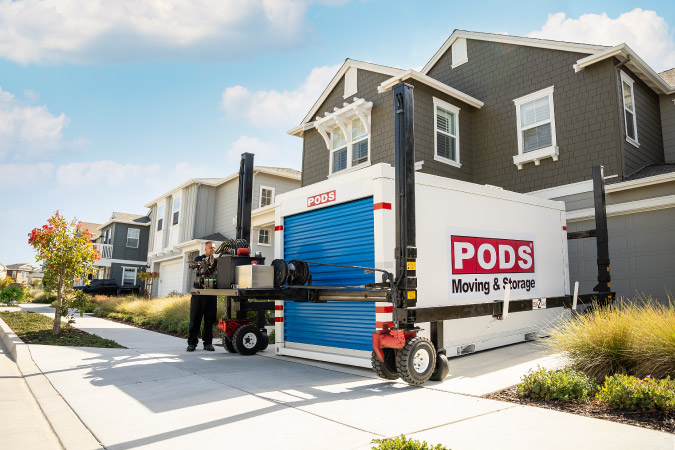
Avid DIY-er? You may prefer a PPM that reimburses you for your moving costs — and may put some extra money in your pocket.
First: What Type of PCS Move Is Right for You?
One of the most important aspects to consider when you’ve been given your PCS pending move orders is which type of move you want to do.
Generally, the military will help you move to your new installation in one of two ways: By using military-contracted full-service movers or by doing a PPM/DITY move (a do-it-yourself move).
The type of move you want to make is up to you and based on what works best for your specific situation. Some find that it’s a lot easier to have pros pack and move their items, while others like the freedom and control that comes with packing up their own things — and potentially getting some money back! Still, others prefer a hybrid approach.
PPM/DITY
A PPM (personally procured move) is a great option if you’d like to pack your own stuff. The government will pay 100 percent of what it would cost to have contracted movers help you move. But the best part? If you spend less on your move than what the government pays, you get to keep the difference. This is a great incentive to use a moving and storage container company like PODS to help with your PCS move. They even offer a military discount!
Using PODS for a PPM/DITY move means you’ll be able to prepare and load up your container on your schedule, ensuring you know exactly where everything is. If you think this route might be right for your PCS move, then you’ll need to make sure you have your hard orders and get approval for a PPM from your transportation office — you won’t get your government payout without it.
Military-Contracted Movers
Another option is to have military-contracted movers take care of the move for you. These are full-service movers that work with the government for PCS moves. They’ll pack up your items and then load everything onto the truck(s).
If this is the route you’re going, it's helpful to prepare each room ahead of time and ensure that you’re aware of what the items look like before they are packed for shipment, in case anything is damaged in the process. It can also help to have photos of your boxes along with a list of the items you have in each one to keep track of everything along the way.
| Pro Tip: If you want to get a rough estimate of what it might cost to move to your new installation, use a PCS move calculator. This is a helpful tool that estimates costs based on factors such as your household size and where you’re moving. |
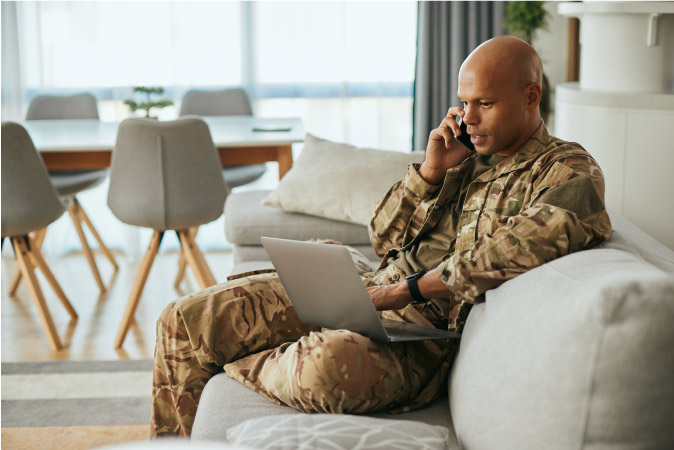
The first item on your PCS moving checklist? Contact your service branch’s transportation office.
PCS Moving Checklist
Now that you’ve determined what type of move you’re going to make, it’s time to check off those important items on the PCS moving checklist. There are lots of things that need to be done, both administratively and as far as organizing the actual move goes. Ready to become a moving checklist pro? Here are moving tips to make your PCS move as smooth as possible.
1. Prepare for the Move
Most service members who have gone through these types of moves will likely recommend you start planning for it as soon as you get your orders. Some people have a few months’ notice while others just get a few weeks’, but no matter how long you have to prepare, you’ll want to hit the ground running. How exactly?
Contact the Transportation Office
One of the first things you should do is contact your service branch’s transportation office. There, you’ll receive a relocation briefing, and you can let them know if you plan to do a PPM or a full-service move. You’ll also learn about your weight allowances, entitlements, whether or not you can use a Government Travel Charge Card, and if you are approved for advances on your entitlements.
Determine Your Moving Schedule
If you’re planning a PPM, you’ll want to go ahead and reach out to moving and storage container companies, if that’s something you’re considering. Likewise, if you’d prefer to do the full-service military move, your transportation office will find military-contracted movers and contact you with the movers’ information and available moving dates.
| Pro Tip: Get your moving dates nailed down as soon as possible, especially if you’ll be moving during peak summer months or you need to arrange an OCONUS (outside the continental U.S.) move that involves flights and overseas housing. If this applies to you, make sure you also research some important tips for moving outside the country with your family or pets. |
Create a Moving Binder
Next, you’ll want to start preparing a moving binder, which will hold all the important information and documents you’ll need to help you through the move, including:
- Multiple copies of your PCS orders
- Transportation information
- Documents to close out your old home (such as lease information) and information on your new home and address
- Contact information for the moving or portable storage container company
- Receipts for all things related to the move (including weight tickets for a PPM)
- Calendar of important deadlines
- Checklist of household items to be moved
- Military PCS checklist of actions to complete before the move (change of address, arranging to ship your car, closing bank accounts, mail forwarding, doctor/vet appointments, etc.)
- Important documents like birth certificates, passports, medical records, etc.
Reach Out for Support
You should also reach out to your new installation’s Military and Family Support Center for a wealth of free information when it comes to living in a new installation. Although most PCS moves follow basically the same path, you’ll want to double-check specifically with your branch of service and the new installation you’ll be moving to.
- Fleet and Family Service Center (Navy)
- Airman and Family Readiness Center (Air Force)
- Army Community Service (Army)
- Marine Corps Community Service (Marines)
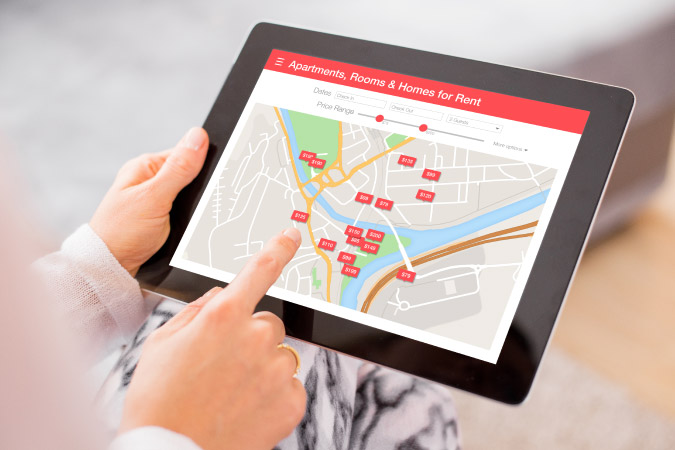
If you want to live on base, there may be a waitlist, so be sure to look for temporary alternative housing while planning your PPM.
2. Look Into Housing Options at Your New Installation
Once you know where you’re going and how you want to get there, you’ll need to determine where you’re going to live. Depending on your new installation’s location, there are a variety of different housing options to choose from. Keep in mind that if you want to live on base, there may be a waitlist, so make sure to plan for alternative housing while you await your turn. Here’s an overview of some of the possible choices you have when it comes to new housing.
Private Housing
This is an option for those service members who would prefer to receive a housing allowance from the government that they can use toward paying rent in a private home on the installation.
Government-Owned Housing
Another option is to live in government-owned housing, which is very common in overseas deployments. The service member and their family will not receive a housing allowance in this circumstance; however, they’re not responsible for paying rent or any utilities.
Installation Properties
Military members and their families can also choose to buy or rent property off the installation. This can involve a lot of legwork, though. You’d be responsible for locating housing arrangements and dealing with property managers or real estate agents.
Shared Military Housing
Service members who are single or are not moving with family members can also opt to live in barracks or a dorm-style situation. This means potentially sharing rooms and common living areas. Members will not receive a housing allowance, but they are not responsible for paying rent or utilities.
What option you decide to go with depends on your preferences, family situation, and whether or not you want to find housing on your own. Each of these has its advantages and disadvantages, which is why it’s essential that you knock this item off of your PCS moving checklist early.
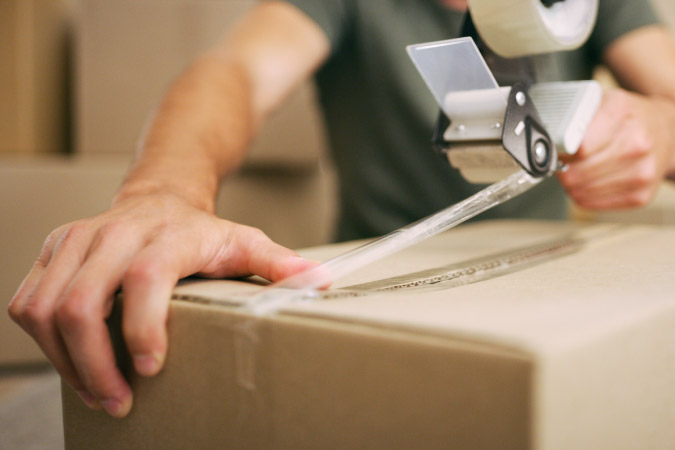
Expedite the packing process by using your PCS moving checklist, staying organized, and packing up one room at a time.
3. Start the Packing Process
This can be a time-consuming process that you shouldn’t rush if you can help it. Giving yourself more than a month from the move date is best, but if you don’t have that kind of time, you can still expedite the packing process by staying organized and moving through one room at a time. Start by determining what you’d like to bring and what you’re going to donate or declutter. This ensures that you’re only bringing what you really want to have in your next house.
| Need boxes and other packing supplies for your PCS move? PODS has you covered with moving kits at Home Depot — tailored to your container size! |
If you’re using movers, it’s helpful to have a representative come over ahead of time and conduct a pre-move survey of what needs to be packed and moved, so they have a better idea of how many supplies to bring and if there are any items that require special attention.
As you’re packing up your rooms, be sure to label the boxes. This may seem like an extra step now, but implementing steps like adding color-coded labels for every room of the house will make the unpacking process easier when you get to your new home. And regardless of the type of move you’re doing, the key is to stay organized. Bonus points if you include a room-by-room list of boxes with their packed items in your moving binder!
| Pro Tip: Keep your essentials close. If movers are packing your household, prepare an area with your essentials that is marked “do not pack.” This would include items you’ll need for the move itself, such as your moving binder, car keys, suitcases with clothes for traveling, computers, toiletries, jewelry, and pet and child items. Among these essentials, make sure to set aside a box of items specifically for the first night in your new house, including sheets, towels, and toiletries. That way, you can easily find this box and get exactly what you need without unpacking everything. |
4. Get Moving!
You’ve worked hard to organize your travel and housing arrangements, and now it’s time to move. Once you say sayonara to your household items (if they’re being driven away by a moving company or PODS), it’s time to get moving yourself!
If you’re driving, make sure you have your car packed up with the first night’s box, any items you’d like to keep close at hand, and the moving binder, as well as any other essentials for traveling (a cooler of drinks, snacks, and pet and child items, for example).
If you’re flying, make sure you have all your luggage and carry-ons, including necessary documents and personal items that you want to keep with you for the trip. And, of course, get to the airport with plenty of time to spare!
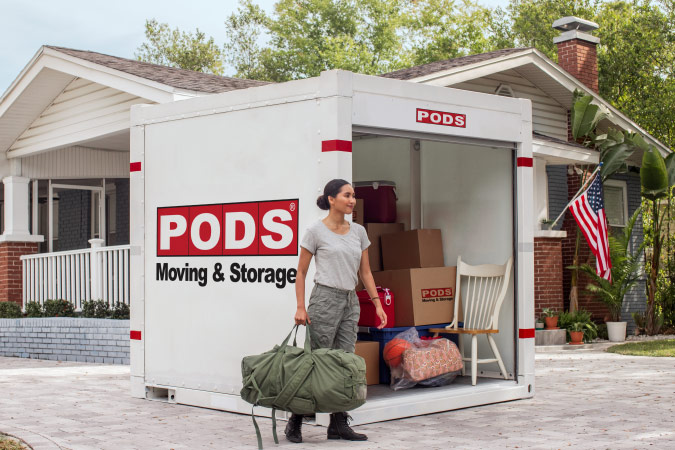
PPM entitlements are equal to 100 percent of what it would cost the military to move you with a full-service moving company.
Choose PODS for Your PCS Move: PPMs With PODS Save More
If you need to make a PCS move, consider using a portable storage container from PODS. Not only does PODS offer flexibility and convenience, but they also understand the specifics around the PPM process. Plus, whether you’re active duty or inactive, you can save with the PODS military discount!
Military moves don’t always follow a perfect timeline, so PODS lets you pack up the container according to your schedule and make adjustments as needed. And, one month’s storage is included in the cost of every move. Your PPM entitlements are equal to 100 percent of what it would cost the military to move you with a full-service moving company, meaning you might end up with a profit!
When you’ve reached your new installation, PODS can either deliver it to your new home or store it in a local PODS Storage Center for as long as you need.
| Visit PODS online to get a free local moving quote or call 866-556-9574 for long-distance moving. |
Related Articles
Comments
Leave a Comment
Your email address will not be published. Required fields are marked *
